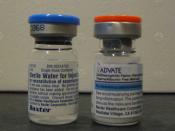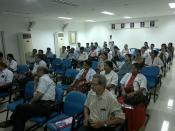What is Haemophilia?
Haemophilia is a disease where blood does not clot after being injured and is caused by a lack of plasma proteins in the blood that causes the clotting. Haemophilia is a relatively rare disease that affects only one in approximately 10000 of the general population. The most common type of haemophilia is having a clotting factor VIII deficiency, or haemophilia A. The second most common type is factor IX deficiency or haemophilia B, which is also known as 'Christmas disease'. Depending on the severity of the disease, the amount of bleeding can range from bleeding easily after a minor cut or abrasion to bleeding spontaneously without seeming to have any cause at all.
When a person with haemophilia is injured, he (or, occasionally, she) does not bleed harder or faster than normal, but will have prolonged bleeding because the blood cannot make a firm clot. Small cuts on the skin are not usually a problem, but bleeding in any deeper area can be prolonged.
How does a person get haemophilia?
Most people with haemophilia are males but in rare exceptions a female may also be affected. Haemophilia is a sex-linked hereditary disorder carried on the X chromosome; you cannot 'catch' haemophilia, people are born with it. Among our genes and chromosomes, we inherit two sex chromosomes from our parents, labelled X and Y. A woman inherits two X chromosomes, one from her mother and one from her father making her female. A man inherits one X chromosome from his mother and a Y chromosome from his father (instead of a second X) making him male. If all of a person's X chromosomes have the haemophilia gene, then that person will have haemophilia, but because it is quite unlikely for both of the X chromosomes to have...


